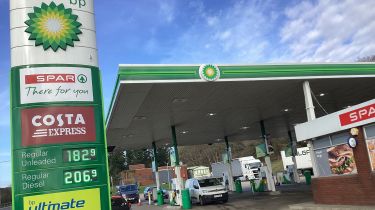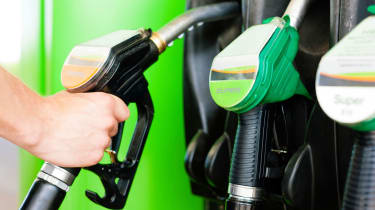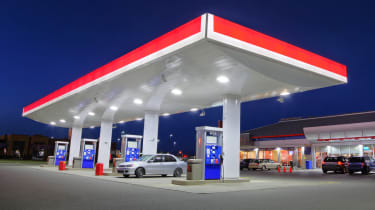UK Supermarket Petrol & Diesel Profit 2023

Data revealed by the RAC shows supermarkets have doubled their margins on petrol and diesel since Russia invaded Ukraine, intensifying cost of living pressures for drivers and adding to UK inflation. According to data from RAC Fuel Watch, the biggest four supermarkets – Asda, Tesco, Sainsbury’s and Morrisons – were taking average margins of 4.7p per litre before Russia attacked its neighbour, with a rate of 3.7p for petrol and 5.7p for diesel. That has now increased to 9.3p for petrol and 10.8p for diesel, the RAC says.
During 2022, the margin supermarkets charged for petrol climbed to almost 11p, and it hit a whopping 20p in the period after the new record average pump price of 191.5p was hit on 3 July. Consumers at the time blamed high global oil prices, rather than supermarket greed, for the painfully high cost of filling up. The data shows supermarkets have taken an average of 15p per litre on diesel so far this year, as they’ve failed to pass on fuel wholesale price cuts to consumers.
For historical perspective, the RAC says margins for supermarkets on fuel were as low as 2.3p per litre in 2016, increasing to 5.7p in 2019 and staying around that level throughout the pandemic. In 2022 it jumped by over 54 per cent, the RAC says, and is averaging almost 11p a litre this year.
RAC fuel spokesman Simon Williams says that lower fuel prices were one of the main reasons for inflation falling to 7.9 per cent last month, but the data clearly shows that this could have been lower still, had the supermarkets reduced their pump prices in line with cheaper wholesale costs.
“Our analysis of wholesale and retail prices reveals the big four supermarkets have benefited considerably on the back of the dramatic wholesale market fluctuations caused by the start of the war in Ukraine,” Williams said. “They appear to have capitalised on petrol in the early months of the war by upping their margin by 5p a litre in 2022, while they have increased their margin on diesel by nearly 8p this year, to 15p, by putting off reducing their prices when the wholesale price tumbled.”
Williams accepts that the cost of running forecourts have increased, but says “bloated margins must make difficult reading for the millions of drivers who are already battling the rising cost of living”.
Live fuel price-comparison tech to be introduced
The Competitions and Markets Authority has called for a new government body to monitor prices, plus new rules forcing filling stations to share up-to-the-minute price details online. The measures were immediately supported by the government, with Energy Security Secretary of State Grant Shapps announcing steps would be taken to put the measures into law.
As the law stands, filling stations only need to advertise prices on their forecourts, which means drivers must drive between stations to compare prices. The CMA recommendation is for new ‘compulsory open data requirements’ that would force fuel retailers to provide current prices to drivers in an instantly available format that can be used by satnavs or third party mobile phone apps.
Need to sell your car?
Find your best offer from over 5,000+ dealers. It’s that easy.
“Instant access to prices via a fuel finder scheme should drive down prices and help people find the cheapest fuel,” the CMA report says. It has also called for the new monitoring body to hold the industry to account, and recommend further action if competition continues to weaken in the market.
While the CMA says it has found no evidence to suggest active collusion between supermarkets, it reports their average margins have increased by six pence per litre from 2019-2022. Meanwhile margin hikes to diesel cost drivers an extra 13p per litre across the first five months of 2023.
“The fact that drivers appear to have lost out to the tune of nearly £1bn as a result of increased retailer margins on fuel is nothing short of astounding in a cost-of-living crisis and confirms what we’ve been saying for many years that supermarkets haven’t been treating drivers fairly at the pumps.

“It’s all about action now and we very much hope the Government follows through with both of the CMA’s recommendations,” he said.
The RAC said it has shared its own data with the CMA showing multiple occasions when supermarkets have failed to respond promptly – or at all – to drops in the wholesale price of fuel. “For more than three months the cost of buying diesel on the wholesale market has been less than petrol, yet it remains the case that drivers are still having to pay more for diesel than unleaded at the pumps.
“At one point the average margin charged on diesel was 25p a litre which is more than three times the long-term margin of 7p. This shouldn’t be allowed to happen, particularly when the Treasury has reduced duty by 5p a litre to help households struggling with the cost-of-living crisis,” the organisation said.
What makes up the price of UK fuel?
The price of fuel can be divided into three sections; the taxes imposed by the Government, the costs of drilling, refining and transporting, and the profit margins for the fuel companies.
For petrol, diesel and bioethanols, the Government gets around 65 per cent of the overall cost through fuel duty and value added tax (VAT). The fuel duty represents the fixed price of fuel – it stays the same regardless how much overall oil prices fluctuate. Currently, the Treasury adds 52.95 pence to each litre of fuel through fuel duty, and another 20 per cent through VAT. How much you pay in VAT depends on how much fuel you purchase.
The second biggest chunk comes from the wholesale costs of the fuel itself. The wholesale cost is a combination of currency exchange rates, global oil prices, and even domestic supply and demand.
Why is supermarket fuel cheaper than an independent forecourt?
In the past, supermarket forecourts have tended to offer the cheapest fuel prices and this was because of the market power supermarkets hold. Companies like Asda, Tesco, Sainsbury’s and Morrisons are all in competition with one another, so they have kept fuel prices as low as possible hoping that when motorists come to fill their tank, they might do their weekly grocery shopping, too.

In more recent times, however, fluctuating fuel prices have caused some analysts to question whether supermarket fuel really is cheaper. In September 2022, RAC fuel spokesman Simon Williams explained that, “there are lots of smaller forecourts which are now selling fuel much cheaper than the supermarkets. We would urge everyone to shop around for the best deals rather than simply assuming the supermarkets are the lowest because they have been in the past.” The Competitions and Markets Authority are looking at supermarket fuel pricing in a bit to “get to the heart of the issues” around apparently high fuel prices.
There are persistent rumours that supermarket fuel contains fewer additives and is of lesser quality than fuel from traditional forecourts, but there’s little hard evidence of this. All fuel sold in the UK has to abide by the standards set in the Motor Fuel Regulation.
Why is fuel so expensive on motorways?
Motorway fuel stations argue the reason their prices are higher is that many of them are open 24 hours a day and offer more services than a regular forecourt. Motorway fuel stations also pay high rent prices for the buildings they operate.
In more remote areas, fuel is often more expensive because of the higher transport and supply costs, but according to RAC fuel spokesman Simon Williams, this doesn’t apply to motorway stations: “We can see no reason why motorway fuel should be so much more expensive. In fact, arguably it is much easier from a delivery point of view than getting fuel to urban filling stations.”
Why is diesel more expensive than petrol?
Although diesel and petrol are taxed the same by the Treasury, historically diesel has been more expensive than petrol, as domestic refineries have struggled to meet demand. This has forced the UK to import diesel from other countries at a greater rate than petrol. In addition, diesel prices are pushed up by the cost of the additives that go into the fuel.
Furthermore, the gap between UK petrol and diesel prices widens during the winter. The end of the US “driving season” means retailers have a surplus of petrol they can’t export, so they sell it here at a lower price. Diesel demand, meanwhile, increases across continental Europe, where the fuel is commonly used in heating oil.
Recently, the influx of cheap diesel from countries like Saudi Arabia has turned the tide, swinging diesel wholesale prices closer to that of petrol, and bringing the pump price down with it. However the fact that we get a higher percentage of diesel from Russia than petrol means the advantage has swung the other way again.
Looking to sell your current car quickly and for a good price? Or looking for a reliable used car, check out our showroom
You may also be interested in…

Used Honda e (Mk1, 2020-date) review: desirable city EV
When we ran an e for eight months in 2020/21, we loved its efficiency, manoeuvrability and comfort. However, the thing that made it easier to

UK petrol & diesel prices: supermarkets double margins since Russian invasion
Data revealed by the RAC shows supermarkets have doubled their margins on petrol and diesel since Russia invaded Ukraine, intensifying cost of living pressures for

Top car manufacturers 2023
The rundown of the best cars to own is based on an incredibly comprehensive set of data, which we were able to curate and analyse
